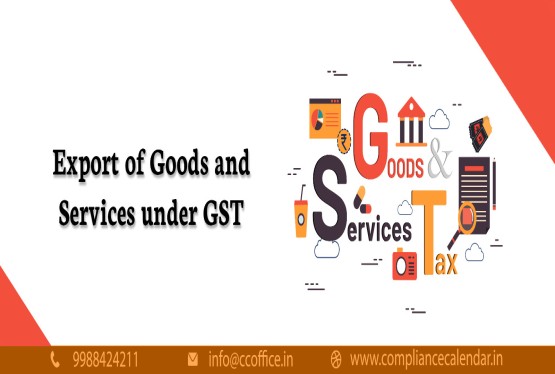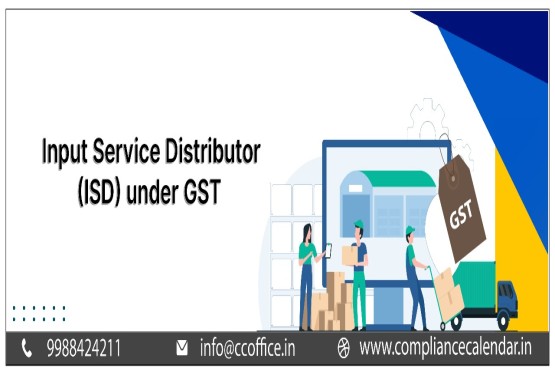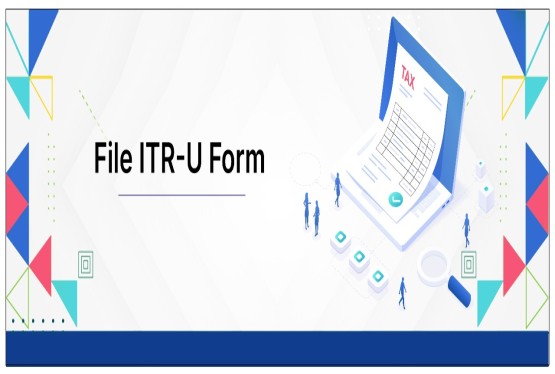Every taxpayer in India wants a smooth and quick tax return process, especially when they are eligible for a refund. An Income Tax Refund is the amount the Income Tax Department pays back to a taxpayer when they have paid more tax than what was actually due. Many individuals are often unsure about how to check income tax refund status and the reasons for delays in receiving their refund. This article explains the concept of income tax refunds in detail, how to track refund status, reasons for delays, and how to request a refund reissue, all in a clear and easy-to-understand manner.
What is an Income Tax Refund?
An Income Tax Refund refers to the return of excess tax paid by a taxpayer during a financial year. This situation arises when the total tax paid through methods like Tax Deducted at Source (TDS), advance tax, or self-assessment tax exceeds the actual tax liability calculated while filing the Income Tax Return (ITR). In such a case, after proper verification, the excess amount is refunded to the taxpayer’s bank account.
Let’s take an example: If a taxpayer paid Rs.15,000 in total as tax for FY 2023-24, but their actual liability after considering deductions, exemptions, and rebates is Rs.10,000, they are eligible for an income tax refund of Rs.5,000.
How is Income Tax Refund Processed?
After filing the ITR and verifying it (either online or by sending a signed ITR-V to CPC Bangalore), the Income Tax Department processes the return. Once the return is processed, the department compares the actual tax liability with the amount paid. If an excess payment is found, the refund is approved and released.
The refund is usually credited directly to the bank account mentioned in the ITR. It is essential to ensure that the bank account is pre-validated and linked with your PAN for timely processing.
How to Claim an Income Tax Refund?
To claim a refund, the taxpayer must first file their ITR for the relevant financial year. Here are the steps to claim your income tax refund:
-
File your ITR using the official income tax portal.
-
Include all sources of income, tax-saving deductions, and the taxes already paid.
-
Verify the ITR using Aadhaar OTP, net banking, or by sending the signed ITR-V form to the Central Processing Centre (CPC).
-
Once processed, if a refund is determined, it will be credited to your bank account.
Always ensure that the bank account you’ve mentioned is active, correctly entered, pre-validated, and linked with PAN to avoid refund failures.
How to Check Income Tax Refund Status?
Once you’ve filed and verified your return, it’s important to keep an eye on the Income Tax Refund Status. There are multiple ways to do this:
1. Through the Income Tax e-Filing Portal
-
Visit: https://www.incometax.gov.in
-
Log in using your PAN, password, and captcha.
-
Click on the “e-File” tab → Select “Income Tax Returns” → Click on “View Filed Returns”.
-
Choose the relevant Assessment Year (Ex: AY 2024-25 for FY 2023-24).
-
Click on “View Details” to check the status.
This will show you whether the return is under processing, refund issued, refund failure, or demand determined.
2. Through TIN NSDL Website
-
Visit: https://tin.tin.nsdl.com/oltas/refund-status-pan.html
-
Enter your PAN and select the assessment year.
-
Submit the form to view your refund status.
This website gives a real-time update on whether the refund has been processed, credited, returned, or failed.
What Does the Refund Status Mean?
Understanding the exact Income Tax Refund Status message can help you take proper action. Below are some common refund status messages and their meanings:
-
Refund issued: Refund has been successfully processed and credited.
-
Refund failure: Refund was not credited due to incorrect bank details. A refund reissue request is required.
-
Refund not determined: No refund is due after processing your ITR.
-
Under processing: Your return is under assessment. No action is needed if verified.
-
Processed with no demand/refund: Return processed, and no refund or demand is found.
-
Refund adjusted against outstanding demand: Refund has been used to clear past dues. An intimation u/s 245 is sent.
-
Pending for e-verification: Return not verified yet. Needs immediate attention.
-
Return processed but contact AO: Processing done, but rectification rights transferred to Jurisdictional AO.
How to Apply for Refund Reissue?
In case your refund fails due to incorrect bank details, you can apply for Refund Reissue by following these steps:
-
Log in with your PAN and password.
-
Go to the “Services” tab and select “Refund Reissue”.
-
Create a refund reissue request.
-
Select the correct bank account and proceed.
-
Verify using Aadhaar OTP or EVC.
-
Submit the request.
Your reissue request will be taken up, and the refund will be credited to the new account after verification.
Why is There a Delay in Receiving an Income Tax Refund?
Sometimes, even after verification, the refund may take longer than expected. Here are common reasons for the delay in Income Tax Refund:
-
Incorrect bank account number or IFSC code.
-
Return not verified or verified after the due date.
-
Pending rectification or response to income tax notices.
-
Mismatch in TDS and Form 26AS.
-
Manual scrutiny by Assessing Officer.
-
Processing backlog during peak seasons.
Always make sure your ITR is verified within 30 days of filing and respond to any notices immediately to avoid delays.
Will I Get Interest on Delayed Refund?
Yes, the Income Tax Department pays simple interest @ 0.5% per month (or part thereof) on delayed refunds. The interest period starts from 1st April of the relevant assessment year till the date of refund.
However, the interest is only applicable if:
-
The return is filed on time.
-
The refund amount is more than 10% of the tax determined.
In cases where the ITR is filed after the due date, interest is calculated from the date of return filing to the date of refund issuance.
How Are Refunds Issued?
The Income Tax Department sends refunds via two methods:
1. RTGS/NECS
-
This is the preferred and faster mode.
-
Refund is directly credited to the bank account.
-
Ensure the bank account is pre-validated and PAN-linked.
2. Cheque
-
If electronic transfer fails, refund may be sent through a cheque.
-
Delays may happen due to incorrect postal address or cheque bounce.
Since March 2019, the government mandates PAN-bank linking and pre-validation of bank accounts for receiving refunds. Aadhaar and PAN linking is also necessary.
Situations Where Refund Is Not Received Even After Filing
Despite completing all steps, some taxpayers still face issues. Here are a few common scenarios:
-
Return filed but not verified: Until e-verification is done, the return will not be processed.
-
Defective return under Section 139(9): The return is incomplete and requires rectification.
-
Outstanding demand adjusted: Refund is held or adjusted with past dues after intimation under Section 245.
-
Return processed with no refund: Upon assessment, no refund is due.
-
Bank account mismatch: Refund failed due to incorrect bank details.
-
Condonation of delay pending: If ITR-V or e-verification was done after the 30-day period, the department must approve the delay before processing.
Conclusion
Filing your return on time and verifying it quickly helps ensure faster processing and refund. Knowing how to Check Income Tax Refund Status empowers taxpayers to stay updated and take action when needed. If you face delays, always verify your ITR, pre-validate your bank account, and keep your email and mobile number updated for timely communication from the Income Tax Department.
Keep checking your Income Tax Refund Status through the income tax portal, NSDL, or other trusted tools to stay informed. If you have any queries then you can connect with Compliance Calendar experts through email info@ccoffice.in or Call/Whatsapp at +91 9988424211.
FAQs
Q1. How can I check my Income Tax Refund Status for FY 2023-24 (AY 2024-25)?
Ans. You can check your Income Tax Refund Status by logging in to the Income Tax e-filing portal at https://www.incometax.gov.in. Go to “e-File” → “Income Tax Returns” → “View Filed Returns” → Select Assessment Year → Click “View Details.” You can also check through the TIN NSDL website or third-party portals like Tax2win.
Q2. What are the common reasons for delay in receiving my Income Tax Refund?
Ans. Delays can occur due to multiple reasons such as incorrect bank account details, return not verified, return found defective under Section 139(9), refund adjusted against outstanding demand, or high processing load during peak filing periods.
Q3. What should I do if my refund has failed due to wrong bank details?
Ans. You should file a “Refund Reissue Request” through the income tax portal. Log in, go to “Services” → “Refund Reissue,” select the correct bank account, verify using Aadhaar OTP or EVC, and submit the request.
Q4. Will I receive interest on a delayed income tax refund?
Ans. Yes, if your refund is delayed, you are eligible to receive simple interest @ 0.5% per month from 1st April of the assessment year till the refund date, provided your return was filed within the due date and the refund exceeds 10% of the assessed tax.
Q5. What does “Processed with refund due” mean in my Income Tax Refund Status?
Ans. It means that your ITR has been processed successfully, and the Income Tax Department has approved your refund. The refund is now being forwarded to the refund banker for payment to your account.
Q6. Is it necessary to pre-validate the bank account for refund processing?
Ans. Yes, it is mandatory to pre-validate the bank account in which you wish to receive the refund. Also, the bank account should be linked with your PAN to avoid refund failure.
Q7. What happens if I e-verify my ITR after 30 days of filing?
Ans. If you e-verify your return after 30 days, the return is treated as invalid unless a condonation request is filed and approved by the Assessing Officer. Your refund will only be processed after such approval.









_crop10_thumb.jpg)


















































































_for_FY_2025-26_crop10_thumb.jpg)












_learn_crop10_thumb.jpg)








_Filing_Due_Dates_for_FY_2024-25_learn_crop10_thumb.jpeg)

















